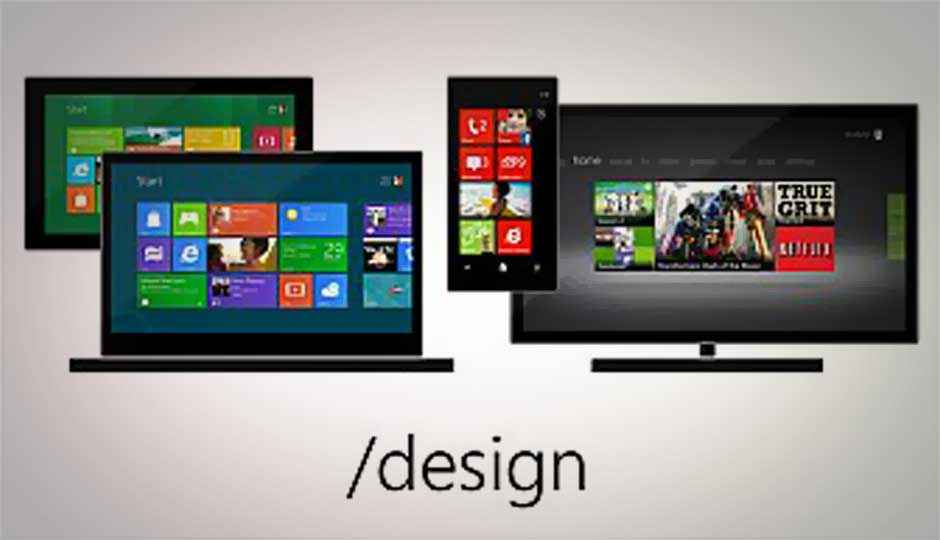

Over the past 12 months, we have seen some radical design and user experience implementations across a lot of software and hardware offerings from Microsoft, be it the completely refreshed Windows 8 UI or the Surface tablet, the focus on design is loud and clear. We spoke to Steve Kaneko, Design Director at Microsoft, seeking his insights on the design philosophy and strategy behind Microsoft products.
Q) As a design director, what role do you (and your department) play in terms of consumer products (software and hardware) from Microsoft?
I lead a team of Designers and Researchers (User and Market) that work with Engineering to develop next generation productivity services from Microsoft. Together, we aspire to create the simple, seamless and delightful experiences that make a difference in people’s lives.
Q) Design has clearly taken a front seat in terms of effort and philosophy behind all the latest Microsoft products, what are the prime factors driving this change? It almost seems like Microsoft is attempting to challenge Apple, a company considered to be at the forefront of design and UI aesthetics.
Design has been a key contributor as part of a development team for some time at Microsoft. I believe what is becoming clearer is a coordinated look and feel to our products and services as part of an effort to signal a cohesive user experience. The driving factor is our customers desire simple experiences that work well together.
Q) Microsoft Surface tablet has been well received globally in terms of design and usability, what were the design aesthetics that the team at MS started out with when working on the Surface project?
We are very proud of the design of the Surface product but I am not at liberty to speak for the Surface team on this matter.
Q) When is the feedback mechanism and test market strategy for Microsoft when it comes to testing and gauging response on design and UI for the upcoming products?
We employ numerous techniques to continually evaluate our products with end users in all phases of the product development cycle. We begin with in field insights and end with post release feedback to make the necessarily refinements to our products and services that customers desire.
Q) As a design director, what future trends and innovations do you foresee in the consumer technology space?
We will undoubtedly see continuous innovation in devices, interfaces, and content types. This is what makes the world I work in so fascinating to be a part of. I think the one predictable aspect of all this innovation is the need for simplicity. To be able to make sense of the world and have technology work for us, not the other way around. It’s our obligation to enable a world where things work together in predictable ways.
Q) Microsoft has been working on the Future Vision, showing off how people will get things done at work, home and on-the-move, can you give us more details on the same?
We continue to invest in efforts like the new Envisioning Center to capture and discuss with partners, what some of the possible futures could look like. This is an important part of the innovation process because these future vision prototypes accelerate agreement, or in some cases disagreement, on what it is we are all heading towards together. We want to openly ask, “Is this a future you believe in?”
Q) Touching your laptop screen isn’t the easiest NUI for mainstream laptops. Has Microsoft taken a big risk when it comes to the future of Windows 8 by integrating this? What according to Microsoft is the future of NUI with Windows 8 on mainstream laptops?
I am not at liberty to discuss any products we have not publically released so unfortunately cannot comment on this matter.
Q) The first generation XBOX was like a VCR in its look. Really big and bulky. The 360 has a more curvy design. Can you shed some light on the design inspiration of the next XBOX? Will it be smaller and more compact than the current 360?
I am not at liberty to discuss any products we have not publically released so unfortunately cannot comment on this matter.
Q) Speech, Kinect and surface. Do we see any integration of the three technologies in the future?
I am not at liberty to discuss any products we have not publically released so unfortunately cannot comment on this matter.
Q) Looking at the design success with the Microsoft Surface, can we expect Microsoft to lead the design and UI front to create reference designs for Smartphones, Laptops, Hybrids and Ultrabooks to help manufacturers build products that work seamlessly with Windows 8 OS?
We continue to embrace our partnerships with OEM partners to build world class hardware for Windows. We will also continue to design and develop products and services with the perspective that the balance between hardware and software is always best done with the end user’s best interest in mind.
Steve Kaneko, Design Director – Microsoft